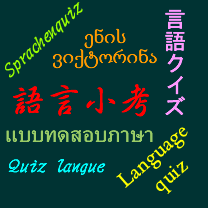
Here’s a recording in a mystery language.
Do you know or can you guess the language, and do you know where it’s spoken?

Here’s a recording in a mystery language.
Do you know or can you guess the language, and do you know where it’s spoken?
If you have red or ginger hair in the Netherlands or Dutch-speaking parts of Belgium you might be called a vuurtoren [ˈvyːrˌtoː.rə(n)], or literally a “fire tower”. This is apparently a rather rude way to refer to redheads. Other ways include roodhaar (red-hair), roodharige (red-haired), rosse (red), or rossekop (red-head) [source].
As well as meaning redhead, vuurtoren also means lighthouse or beacon, and was a nickname for the old 250 Guilder note, which had a lighthouse on it. Another name for a lighthouse is a lichttoren, and a lighthouse keeper is a vuurtorenwachter.
Vuur (fire, heat, heater, lighter) comes from the Middle Dutch vuur (fire, bonfire, passion), from Old Dutch fuir (fire), from Proto-West Germanic *fuir (fire), from Proto-Germanic *fōr (fire), ultimately from Proto-Indo-European *péh₂wr̥ (fire) [source].
Toren (tower, rook (in chess)) comes the Middle Dutch torre (tower), from the Old Dutch turn (tower), from the Old French tur/tor (tower), from the Latin turris (tower, rook), from the Ancient Greek τύρρις (túrrhis – tower) [source].
A YouTube Channel I found recently is Linguriosa, which is run by a redheaded Spanish lass (una pelirroja) who makes interesting and funny videos about the Spanish language. She talks clearly and not too fast, so it’s great if you’re learning Spanish, as I am at the moment, or are a fluent speaker. Here’s an example:
Do you know of similar channels in other languages?

According to research carried out by Preply, the countries with the best language learning environments are Luxembourg, Sweden, Cyprus, Malta, Denmark, the Netherlands, Finland, Slovenia, Spain and Estonia.
Their Worldwide Language Index was compiled from analyzing data from 30 European countries, plus the USA, on such factors as the number of official languages, the degree of multilingualism, language learning in schools, the level of competence in foreign languages, access to language learning technology, and whether TV and films are subtitled or dubbed.
Overall, Luxembourg scored hightest, so if you grew up in Luxembourg, you are more likely to be successful in learning several languages. Are there any Luxembourgers reading this? Would you agree with this?
Luxembourg has three official languages: Luxembourgish, German and French, and education is in all three languages. English is also taught in schools, and students can choose to learn Italian, Spanish, Portuguese or Chinese. In addition, some classes are taught in Portuguese or English for the children of immigrants [source].
In terms of individual factors, Luxembourg, Cyprus, Malta, Spain, Austria, Hungary, France, Latvia, Poland, Italy, Sweden and Croatia all score highly for language learning in school. The countries with the highest level of command of the best known foreign languages include Luxembourg, Sweden and Malta.
The UK only scores highly in the Subtitles, Dubbing and Voiceover category, and the USA scores highly in language diversity.
What this study didn’t look at, as far as I can tell, is whether these countries are also good places to learn languages if you’re from elsewhere. It would be interesting to see how well each country teaches their local language(s) to immigrants or visitors interested in learning them.
Note: this post is sponsored by Preply, an online learning platform, connecting a global network of tens of thousands of active learners and 15,000 verified tutors to study and teach over 50 languages.

Here’s a recording in a mystery language.
Do you know or can you guess the language, and do you know where it’s spoken?
One of the words that came up in my Spanish lessons today was cana [ˈkana], which means white or grey hair. I hadn’t come across it before, so thought I’d find out more about it and where it comes from.
Cana is related to, and possibly derived from, cano (ancient, old (person), hoary, white/grey-haired). Cano and cana come from the Latin word cānus (white, hoary, frothy, grey), from the Proto-Italic *kaznos (grey), from the Proto-Indo-European *ḱas- (blond, grey, white) [source].
Retaled words and expressions include:
Some words from the same PIE root include:
Cana is also a slang word for the police and prison in Argentina, Uruguay and Chile.
Cana should not be confused with caña, which means cane, reed, a slim type of glass, or a hangover. It comes from the Latin canna (reed), from the Ancient Greek κάννα (kánna – reed), from the Akkadian 𒄀 (qanû – reed), from the Sumerian 𒄀𒈾 (gi.na) [source].
Incidentally, the word hoary (white, whitish, greyish-white) comes from hoar (white/greyish colour, antiquity), from the Old English hār (hoar, hoary, grey, old), from the Proto-Germanic *hairaz (grey), from the Proto-Indo-European *(s)ḱeh₃- (grey, dark). [source].
The other day a friend claimed that Jamaican Patois (Jimiekn / Patwah), an English-based creole spoken in Jamaica, ‘has no grammar’.
I understand why they think this, but it’s not true. Every language has grammar, in the sense of a set of patterns and conventions for how sounds go together to form words (morphology), and how words go together to form sentences (syntax). There are also conventions for how the sounds are pronounced (phonology) how they’re represented in writing (orthography).
In some languages words may change to indicate their function in a sentence and their relationship to other words. Verbs may conjugate to show such things as person and tense. Nouns and other words may change to indicate things like gender (masculine, feminine, etc), number (singular, plural, etc), and case (nominative, accusative, dative, etc).
In other languages, such as Chinese, words do not change, but you use grammatical particles to indicate things like when something is happening, whether it is still happening, and so on. You just have to put the words in the right order and choose the right particles. You don’t have to worry about verb endings and other ways words can change.
If you think of grammar as things like verb endings, noun declensions and such like, then you could say that isolating languages like Chinese and Thai have less grammar than European languages.
In the same way, you could say that Jamaican has less grammar than English, or that Jamaican just works in a different way to English. It is not broken or poor English, and has its own structure and rules.
Here are some examples of how Jamaican and English differ:
Source: https://en.wikipedia.org/wiki/Jamaican_Patois
You can hear a bit more Jamaican here:

Here’s a recording in a mystery language.
Do you know or can you guess the language, and do you know where it’s spoken?
The French expression faire un bœuf (“doing a beef/ox”) means to jam or have a jam session. A jam (session) can happen at any time when musicians get together and jam, or play and/or sing in an informal or improvised way.
Why do they say faire un bœuf though? What does improvising music have to do with oxen or beef?
Well, it comes from Le Boeuf sur le Toit (The Ox on the Roof), a celebrated Parisian cabaret-bar founded in 1921 by Louis Moysés. In the 1920s and 30s especially, it was popular with musicians and singers, and improvised jam sessions often broke out there. Such activities have been known as bœufs ever since. The bar still exists, but is now a fancy restaurant and apparently no longer has the glamour, social cachet and bohemian atmosphere that it once had [source].
It is not known why we call such activities jam sessions in English. Apparently jam was first used in this way in the 1920s among jazz musicians. Possibly because it involves muscians getting together in one place, e.g. jamming themselves into a room. Or jam might refer to something sweet or a nice treat, which was one meaning of the word that emerged in the 19th century [source].
I’ve played instruments and/or sung in jam sessions in pubs, boats, trains, churches, vineyards, gardens, community centres, castles, fields, airports, mountains and other places. There are always great fun and I miss them.
Here’s a video from a folk music session that used to happen in Tafarn Y Glob, a pub in Bangor, and will start again one of these days, hopefully:
Are there interesting ways to refer to jam sessions in other languages?
The Dutch word onderrichten [ˌɔn.dərˈrɪx.tə(n)] means to teach, instruct or educate. It comes from onder (under-, sub-, lower) and richten (to direct, aim) [source]. So you could say that education in Dutch involves supporting and directing students.
Another Dutch word meaning to teach or educate is onderwijzen [ˌɔn.dərˈʋɛi̯.zə(n)], which comes from onder and wijzen (to point, indicate, direct) [source] – so it has a similiar sense to onderrichten.
An onderwijzer or onderwijzeres is a teacher in a primary / elementary school (lagere school / basisschool) and they provide onderwijs (education, teaching), or more specifically, basisonderwijs (primary / elementary education). A word for to teach is onderwijzen.
A teacher in a secondary school (middelbare school) is a leraar or lerares, they leren (teach) and they might be found in a leraarskamer / lerarenkamer (staffroom).
Other words for education are opleiding and opvoeding. Opleiding means education, training or a programme, and comes from opleiden (to lead up; to bring up, educate; to coach, train), from op (up) and leiden (to lead) [source].
Opvoeding means education (at home), upbringing, raising (children) and comes from opvoeden (to raise, to bring up (a child)), from op (up) and voeden (to feed) [source].
The English word education comes from the Middle French éducation (education, upbringing), from Latin ēducātiō (breeding, bringing up, rearing), from ēdūcō (I lead, draw, take out, raise up), from ex (out, away, up) and dūcō (I lead, guide, conduct) [source]. So it has a similar meaning to onderrichten and onderwijzen.
The English words teacher and teach come from the Old English tǣċan (to show, declare, demonstrate; teach, instruct, train), from the Proto-Germanic *taikijaną (to show), from the Proto-Indo-European *deyḱ- (to show) [source].
Thanks to Anna Rutten for inspiring this post

Here’s a recording in a mystery language.
Do you know or can you guess the language, and do you know where it’s spoken?